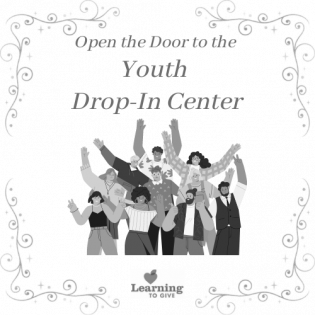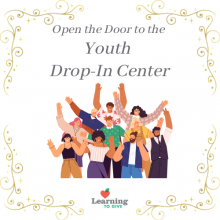Open the Door to a Youth Drop-In Center
The "Open Doors to Your Community" project is a virtual door that guides young people to the actual door of local resources so they can learn about their community, take action, and build connections and understanding of their roles in community.
What Is the Purpose of a Youth Drop-In Center?
A youth drop-in center serves youth from ages 14-24 who are not securely in a home and need some support. They may need a place to shower, apply for jobs, learn skills, or get mental health support as they work toward finding a place to live.Meet the Housing Manager
In this brief video, we meet Kendra Avila, the housing manager at AYA Youth Collective in Grand Rapids, Michigan. Kendra introduces us to a few of the many services provided by a youth drop-in center. She explains what young people might need, ways they get support at the drop-in center, and ways any young people can help.
Contact Your Youth Drop-In Center
Call and ask for the housing manager or youth advocate to set up a phone or in-person interview. Tell them you'd like to learn more about the work of the youth drop-in center so you can get involved or volunteer to help their mission. Ask for 30 minutes or an hour of their time. The Interview Script linked here and below can help you make the call.
Interview Questions
These questions can help you learn about your community and ways you can get involved.
- What is the main purpose of the drop-in center? This may be its mission or vision.
- What are some challenges in the community that the center seeks to address?
- What are some programs and resources that address those issues?
- What can a young person do to promote this service and volunteer or donate supplies?
Take Action in Your Community
Reflect on the work of advocates for youth who are homeless in your community. What can you help them do? Your voice and time matter. The resources below can help you plan a project.
The best service-learning projects guide us to gain and use knowledge, are led by youth voice and passion, address a need, and develop connections with local resources over time.
Children and youth of any age can organize a collection campaign or create artwork to display at the center or to tell the community about the center.
 Learning to Give Issue Area Toolkits include background on the issue, community connections, lessons and activities, project ideas, and planning guides. Check out the Homelessness and Poverty Service-Learning Toolkit here.
Learning to Give Issue Area Toolkits include background on the issue, community connections, lessons and activities, project ideas, and planning guides. Check out the Homelessness and Poverty Service-Learning Toolkit here.
 Learning to Give Service Sparks guides provide directions for generous actions that encourage youth voice and promote the common good. Check out the Advocacy Posters and Listen with Generosity service projects here.
Learning to Give Service Sparks guides provide directions for generous actions that encourage youth voice and promote the common good. Check out the Advocacy Posters and Listen with Generosity service projects here.
 Learning to Give Literature guides combine selected literature with thought-provoking discussions and activities that teach about giving and civic engagement. Read aloud a picture book to a younger child or a retirement home buddy. This beautiful Change Sings Literature Guide introduces readers to their power to make a difference.
Learning to Give Literature guides combine selected literature with thought-provoking discussions and activities that teach about giving and civic engagement. Read aloud a picture book to a younger child or a retirement home buddy. This beautiful Change Sings Literature Guide introduces readers to their power to make a difference.
More about Youth Homelessness and Action
Resources to Learn More about Youth Who Are Homeless:
- The organization Youth Collaboratory has information and resources for strengthening outcomes for youth in high-risk situations.
- Point Source Youth is a national nonprofit that can help you learn about youth homelessness in your community and things you can do.
- The book, Evicted, by Matthew Desmond helps readers understand poverty and the importance of having a home
Contact your local center to see their specific needs, which might be similar to these ideas:
- Gently used books and art supplies for an in-house library and art center
- Bottled water, packaged snacks, and ready meals like soup
- Basic hygiene supplies like shampoo and hair ties and menstrual products
- Clothing and shoes
- Word-of-mouth support, and social media efforts, letting young people know the resources are there for them.

